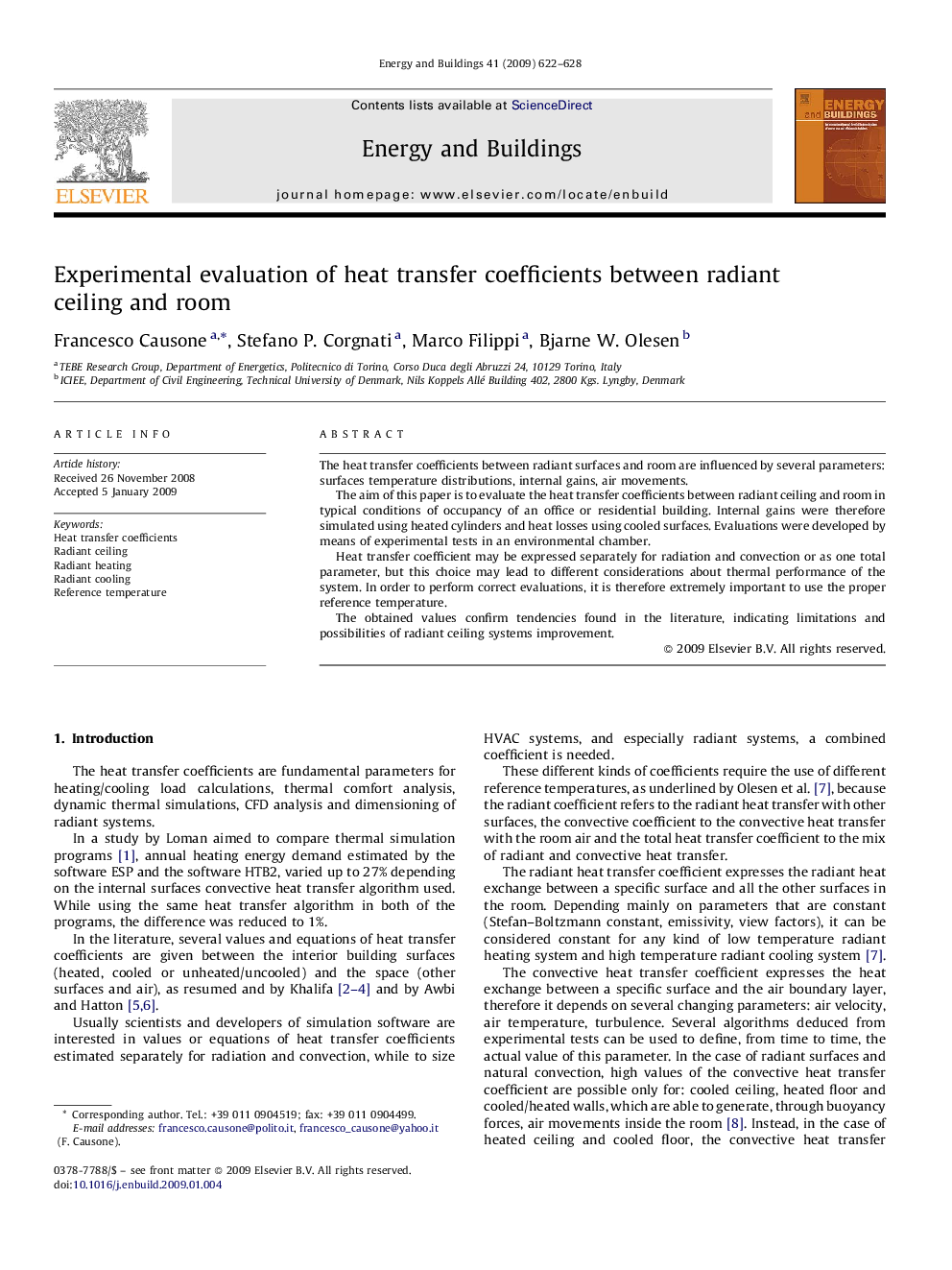| Article ID | Journal | Published Year | Pages | File Type |
|---|---|---|---|---|
| 265287 | Energy and Buildings | 2009 | 7 Pages |
The heat transfer coefficients between radiant surfaces and room are influenced by several parameters: surfaces temperature distributions, internal gains, air movements.The aim of this paper is to evaluate the heat transfer coefficients between radiant ceiling and room in typical conditions of occupancy of an office or residential building. Internal gains were therefore simulated using heated cylinders and heat losses using cooled surfaces. Evaluations were developed by means of experimental tests in an environmental chamber.Heat transfer coefficient may be expressed separately for radiation and convection or as one total parameter, but this choice may lead to different considerations about thermal performance of the system. In order to perform correct evaluations, it is therefore extremely important to use the proper reference temperature.The obtained values confirm tendencies found in the literature, indicating limitations and possibilities of radiant ceiling systems improvement.
